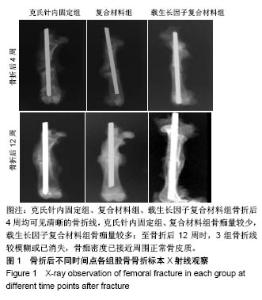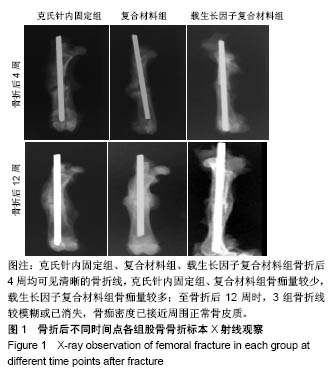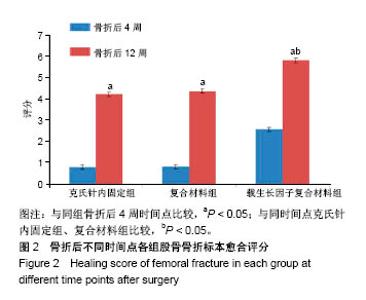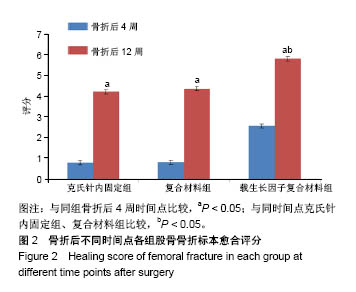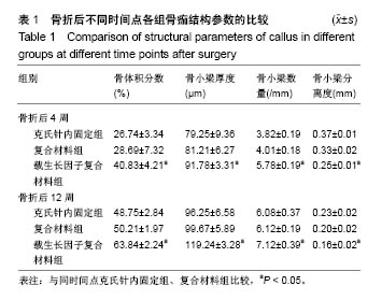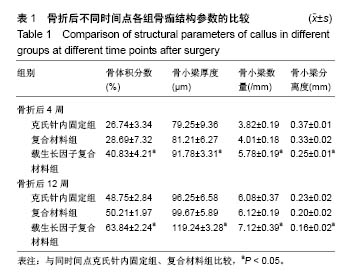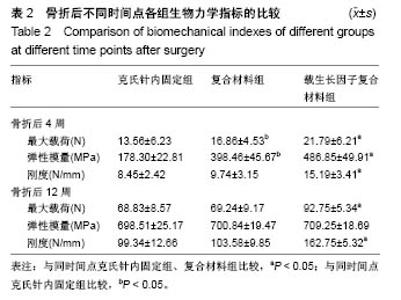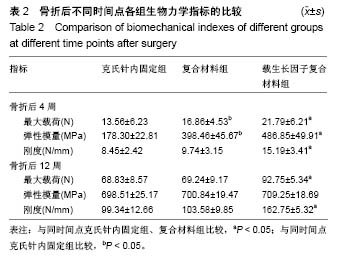| [1] 陈琼.骨质疏松患者的营养治疗[J].医师在线,2018,8(16):40-41.[2] Miller PD.Management of severe osteoporosis.Expert Opinion on Pharmacotherapy.2016;17(4):743-788.[3] Xie YM,Yuwen Y,Dong FH,et al. Clinical practice guideline of traditional medicine for primary osteoporosis.Chin J Integr Med.2011;17(1):52-63.[4] Zhu H,Fang J,Luo X,et al.A survey of bone mineral density of healthy Han adults in China. Osteoporosis Int.2010;21(5): 765-772.[5] 杜增峰,贺耀耀,马晓磊,等.骨愈灵胶囊联合注射用骨肽治疗骨质疏松症的临床研究[J].现代药物与临床, 2016,31(9):1382-1385.[6] 周锐,许建中,周华东.雌激素、维生素D和骨形态发生蛋白质与骨质疏松症及心脑动脉钙化的发生机制[J].中华解剖与临床杂志, 2017,22(1):83-86.[7] 吴星,吴立忠,詹洋,等.高表达骨形态发生蛋白2小鼠骨髓间充质干细胞体系的构建及基因表达的研究[J].福建医药杂志, 2018, 40(1):113-116.[8] 张斌斌,高全文,李冰, 等.间充质干细胞成骨分化过程中骨形态发生蛋白的作用研究[J].创伤外科杂志,2018,20(2):153-157.[9] 陈烨,张峥,马海棠,等.局部应用骨形态发生蛋白-7复合纤维蛋白治疗大鼠骨质疏松性椎体骨折的可行性[J].疑难病杂志, 2018, 17(4):400-404.[10] 黄田,郑南生,张育专,等.磷酸钙骨水泥/纤维蛋白胶复合材料填充桡骨缺损的生物相容性[J].中国组织工程研究, 2016,20(52): 7829-7835.[11] Xiu J, Fan J, Li J, et al.Different angiogenic abilities of self-setting calcium phosphate cement scaffolds consisting of different proportions of fibrin glue.Biomed Res Int. 2014;2014: 785146.[12] Tao Z,Zhou W,Jiang Y,et al.Effects of strontium-modified calcium phosphate cement combined with bone morphogenetic protein-2 on osteoporotic bone defects healing in rats.J Biomater Appl. 2018;33(1):3-10.[13] Huang B,Wu Z,Ding S,et al.Localization and promotion of recombinant human bone morphogenetic protein-2 bioactivity on extracellular matrix mimetic chondroitin sulfate-functionalized calcium phosphate cement scaffolds. Acta Biomater.2018;71:184-199.[14] Li Y,Li R,Hu J,et al.Recombinant human bone morphogenetic protein-2 suspended in fibrin glue enhances bone formation during distraction osteogenesis in rabbits.Arch Med Sci. 2016; 12(3):494-501.[15] 刘兴炎,厉孟,刘旭东,等.rhBMP-2/CPC对骨质疏松骨缺损的治疗作用的研究[J].中国骨质疏松杂志,2009,15(1):16-19.[16] Silva BC,Leslie WD.Trabecular Bone Score: A New DXA-Derived Measurement for Fracture Risk Assessment. Endocrinol Metab Clin North Am. 2017;46(1):153-180.[17] Urist MR.Bone:formation by autoinduction.Science. 1965; 150(3698):893-899.[18] 周万琳,李琳琳,刘润喆,等.PDGF-BB/BMP-2影响种植体周围骨形成作用的组织学观察[J].中国实验诊断学, 2018,22(2): 325-328.[19] 贾鹏,徐又佳.骨硬化蛋白在骨重塑中作用的研究进展[J].中华创伤杂志,2017,33(4):371-376.[20] 李军,王云,鲍小明,等.rhBMP-2体外诱导骨质疏松大鼠BMSCs成骨及VEGF表达的研究[J].中国骨伤,2015,28(5):446-449.[21] 卫鹏斌,张民,李军,等.VEGF在BMP-2促进骨质疏松性成骨细胞过程中作用机制的研究[J].中国临床实用医学,2015,6(3):13-16.[22] 陈龙飞,王海涛,张翼,等.载阿仑膦酸钠的磷酸钙骨水泥修复兔股骨骨缺损的实验研究[J].河南医学研究, 2018,27(4):591-594.[23] Shi M,Chen L,Wang Y,et al.Effect of Low-Frequency Pulsed Ultrasound on Drug Delivery, Antibacterial Efficacy, and Bone Cement Degradation in Vancomycin-Loaded Calcium Phosphate Cement.Med Sci Monit. 2018;24:797-802.[24] Shu X, Feng J, Feng J, et al.Combined delivery of bone morphogenetic protein-2 and insulin-like growth factor-1 from nano-poly (γ-glutamic acid)/β-tricalcium phosphate-based calcium phosphate cement and its effect on bone regeneration in vitro.J Biomater Appl.2017;32(5):547-560.[25] 凌泽莎,贾功伟,谭波涛,等.注射复合rhBMP-2骨水泥制作猕猴椎动脉型颈椎病模型[J].中山大学学报(医学科学版), 2016,37(5): 775-780.[26] 李侠,陆晴友,潘玉涛,等.可注射磷酸钙骨水泥联合骨形态发生蛋白-2治疗老年肱骨近端骨折疗效分析[J].实用骨科杂志, 2015, 21(10):883-886,887.[27] 全迪,任玉琦,王晓添.评价体外冲击波联合增强型纤维蛋白胶负载骨生长因子治疗骨不连的临床疗效[J].中国实用医药, 2018, 13(18):197-198.[28] 崔学文,张竞新,许艺荠,等.SHH缓释纤维蛋白支架移植促大鼠脊髓损伤的修复[J].神经解剖学杂志,2017,33(2):131-137.[29] Lv J,Xiu P,Tan J,et al.Enhanced angiogenesis and osteogenesis in critical bone defects by the controlled release of BMP-2 and VEGF: implantation of electron beam melting-fabricated porous Ti6Al4V scaffolds incorporating growth factor-doped fibrin glue.Biomed Mater. 2015;10(3): 035013.[30] 董静静.自凝固磷酸钙/纤维蛋白协同诱导成骨机制的研究及成骨材料的研制[D].西安:第四军医大学,2013.[31] 沈蕴茹,郭海英.温肾固疏方干预绝经后骨质疏松药理研究[J].中国骨质疏松杂志,2018,24(4):503-508.[32] 张立岩,王华,季瑞达,等.骨质疏松骨折的特点及治疗新进展[J].北华大学学报(自然科学版),2018,19(4):499-502.[33] 齐晓宇,赵磊,毕冬冬,等.右归饮对去势雌性小鼠骨质疏松的治疗作用[J].现代药物与临床,2017,32(11):2072-2076.[34] 史晓林,梁博程,吴鹏,等.淫羊藿总黄酮对去势大鼠骨折原始骨痂发生的影响及其机制[J].中国骨伤,2017,30(8):743-750.[35] 张君.慢病毒介导的骨形态发生蛋白-2治疗骨质疏松骨折的效果[J].西安交通大学学报(医学版),2016,37(5):669-672.[36] 张晓刚,赵希云,宋敏,等.骨质疏松性椎体压缩骨折的生物力学研究进展[J].医用生物力学,2017,32(2):199-204.[37] 陈镘如,徐克惠,乔林.结合雌激素对去势大鼠骨折愈合生物力学指标的影响[J].检验医学与临床,2015,12(5):622-624. |
